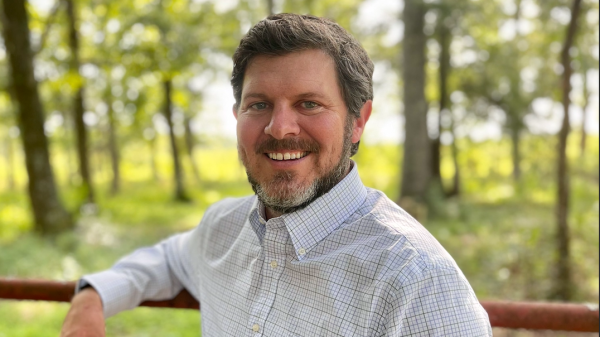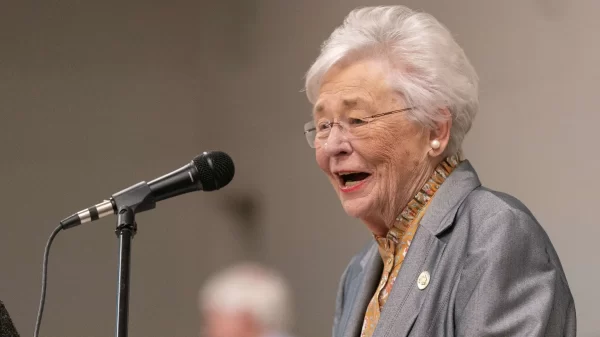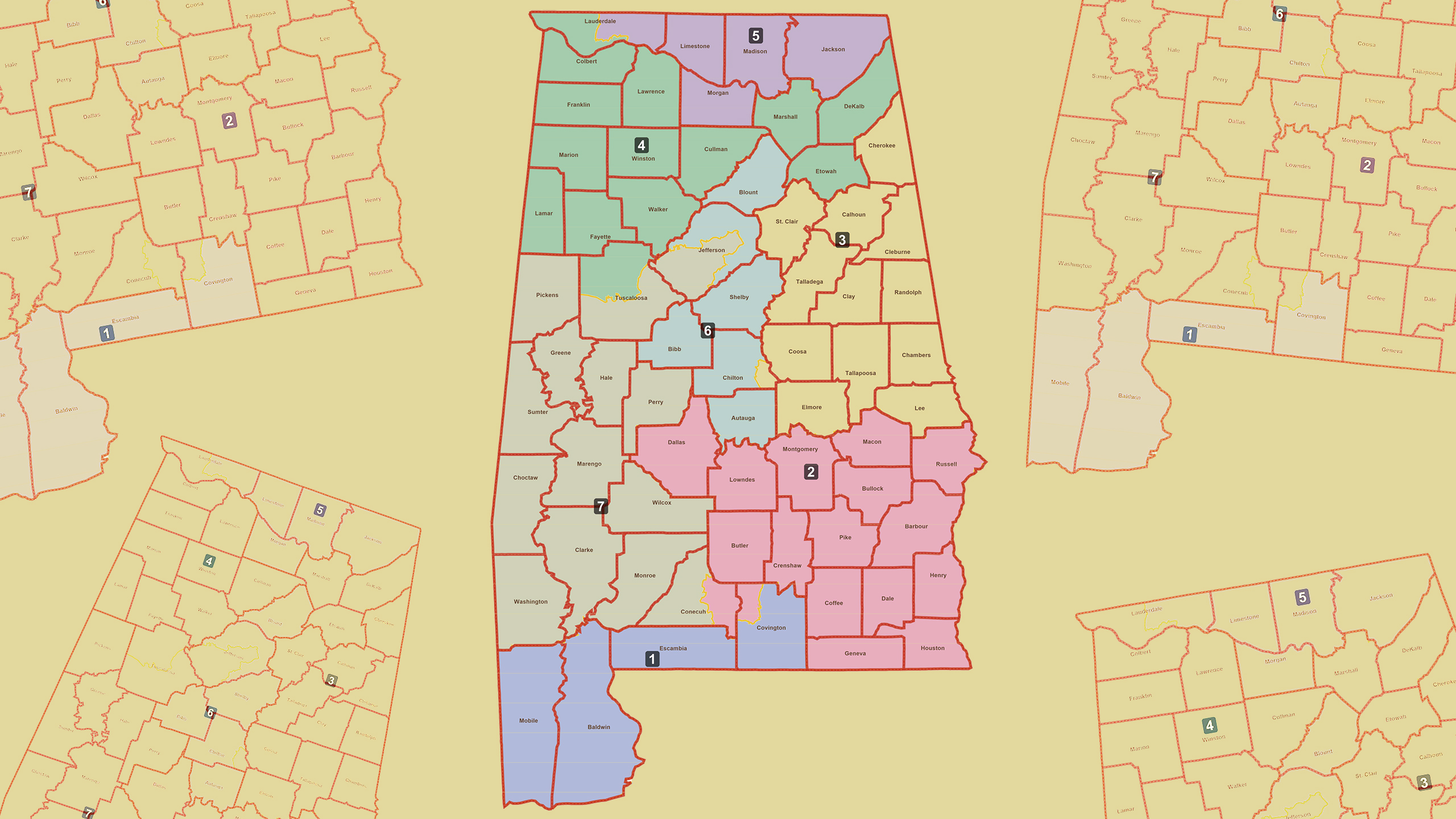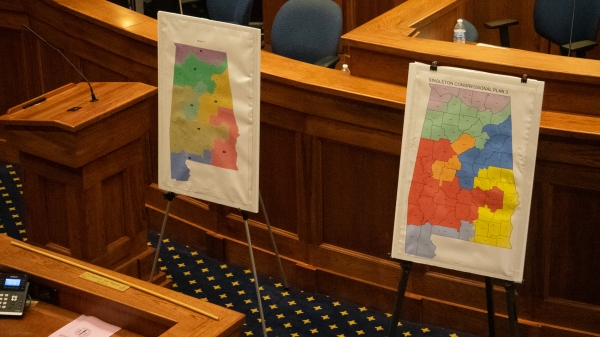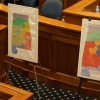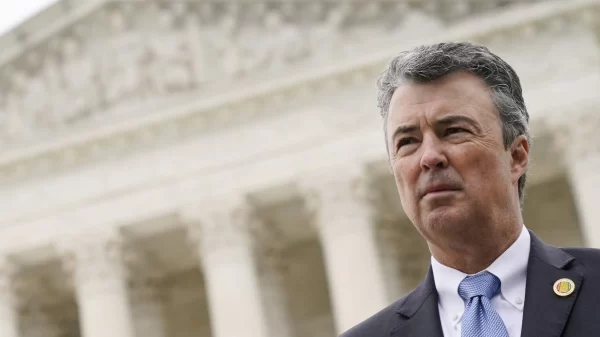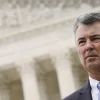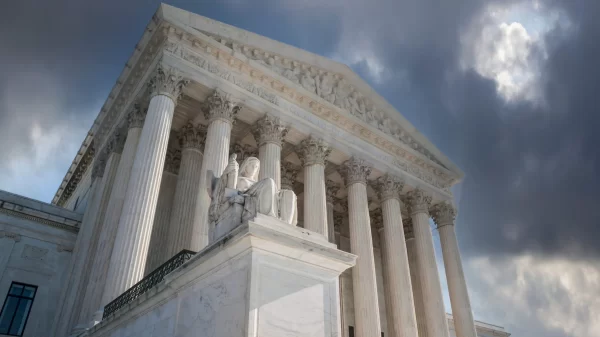Reapportionment Committee co-chairs Rep. Chris Pringle, R-Mobile, and Sen. Steve Livingston, R-Scottsboro, introduced the “Communities of Interest Plan” after the conclusion of the committee’s public hearing Thursday and pushed it through in the committee’s 10 a.m. meeting Monday.
With a 14-6 vote along party lines, the Communities of Interest plan was the only plan approved by the committee out of 10 considered. Only three plans received a vote, as Pringle adjourned the session seconds after the vote was counted.
Democratic members of the committee did secure votes on the VRA Plaintiffs Plan and the the Campaign Legal Center (CLC) plan by substituting Republican motions. Pringle attempted to ignore Sen. Rodger Smitherman’s, D-Birmingham, attempt to vote on the CLC plan but yielded to a point of order. Both plans failed 6-14. Rep. Corley Ellis, R-Columbiana, and Rep. Laura Hall, D-Huntsville, were absent from the meeting.
The Allen v. Milligan court order requires the new congressional districts to include either an additional majority Black district — as district seven is currently — or an additional “opportunity district” in which Black voters have the opportunity to elect the Black-preferred candidate. At the August 14 district court hearing to review any approved map, the court must apply a strict scrutiny test.
Pringle argued the Communities of Interest Plan would provide an opportunity district in district two, as 42.45 percent of the voting-age population is Black, and 42.53 percent of the whole population is Black. It achieves this by expanding district two west to include Lowndes and Dallas counties — both majority Black and considered part of Alabama’s Black belt. District two also picks up Macon and Russell counties while losing Autauga County and most, but not all, of Covington and Conecuh Counties. It may push district seven’s section of Jefferson County further north, but street level information is not yet available.
Pringle argued the plan “maintains, basically, the core of the existing districts.” It keeps the same number of split counties, six. Unlike several maps, like the Hatcher plan, it keeps incumbent representatives’ residences in their respective districts. It does reduce the Black population of district seven from 57.1 percent to 52.15 percent.
“I don’t think that’s compliant at all with what the court found,” Smitherman said. “If you’re not changing anything, but moving just a few people over here and saying, ‘that’s opportunity,’ you haven’t addressed anything else in there. And even moving to get those people may be subject to gerrymandering.”
The committee was not provided with a functionality report on the plan. Such a report would provide voting analysis of whether proposed districts would have elected Black-preferred candidates in previous elections.
“It’s not just raw numbers on a piece of paper, you know. You’ve got to go historically, to see how those periods perform to make a determination if it could even potentially satisfy the court order,” Rep. Chris England, D-Tuscaloosa, said. “We’ve passed a map that dodged public scrutiny, that has no foundational information to even know if it works, and now that’s the map that’s going to matriculate through the process.”
The Legislature convened the special session at 2 p.m. Monday. After conducting brief introductory business, both chambers adjourned until Tuesday without considering any redistricting plan.
“I think you’re gonna see what happened today in this committee play out in front of the entire Legislature,” England said. “I don’t know,what the selection criteria was to even get an opportunity to have your map voted on. I don’t know what maps they left on the cutting room floor. I don’t know what criteria they use to select the maps that we voted on. But what I do know is the only map that was adopted today was the one that dodged the process all together. It doesn’t have any of the foundational information underneath it to know if it even works, and I think that’s a travesty.”



